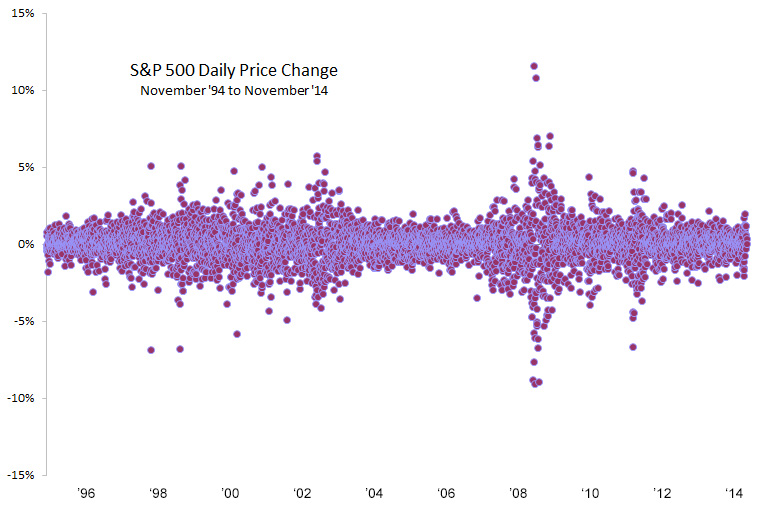Nothing may be as unnerving to investors as a spike in market volatility.
On September 18th, the S&P 500 Index closed at an all-time high of 2,011. Just seventeen trading days later, that barometer of U.S. blue-chip stocks had fallen nearly 7%. While media headlines suggested investors brace for a downturn, markets actually rebounded quickly. Today, the S&P 500 is trading at a new record high.

It is understandable if these market gyrations cause you to feel anxious. As the graphic above shows, however, recent volatility has been mild in comparison to periods experienced in 2003, 2008 or 2011. Still, no one likes to see a sudden 5% (or more) drop in their portfolios. During times like these, it is helpful to put volatility in perspective.
Volatility isn’t all bad—Few investors, of course, would complain about a sudden 10% surge in the value of their portfolios. Such positive days are most likely to occur during volatile periods, as investors digest and react to new (and often conflicting) information.
Risk is the ever-present companion of return—Since November 1994 stocks have declined on 46% of all trading days. A “big” loss of 1% or more has occurred about every seven days or so. Yet over this 20-year period, $100,000 invested in the S&P 500 grew to nearly $440,000. Capturing this growth requires discipline and patience.
Diversification is your buddy—In volatile markets, investments which usually move in different directions can suddenly tumble together. That is why an allocation to safe bonds can be so important. High-quality government bonds are one of the rare investments that do well when stocks and other assets fall sharply, as we saw in 2008 and—again—this October. Safe bonds help act as a shock-absorber for the bumpy ride stocks so often provide.
Ignore the hype—Experts touted in the financial press would have us believe periods of heightened volatility are when active stock-pickers and market-timers shine. Early in 2014, many high-profile hedge fund managers lamented the calm and “boring” markets, which made outperforming difficult. When their desired volatility arrived in October, though, hedge funds posted losses. The average hedge fund fell 0.3% in October while a balanced stock and bond portfolio rose nearly 3%. Volatile or not, the market is no more or less predictable than it has ever been.
